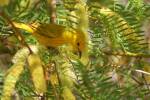More to quail hunting than walking around desert
Few things can cause a sportsman’s heart rate to spike like the whir of wing beats from a flushing quail or chukar partridge, especially when the bird erupts from a small piece of cover within mere feet of where you stand. It is a feeling that never grows old, no matter how many times one experiences it.
My first introduction to upland bird hunting came when I was about 14 years old. My family lived on the outskirts of Tucson, Ariz., where we had access to the wide-open desert, and all of it was available for hunting. There, my friend Gary and I wandered the desert with shotguns and did our best to bag a few quail, but it didn’t take long for us to learn there was more to quail hunting than walking around in the desert.
Though we were young, we soon learned to recognize where the birds liked to hang out. Each time we went out, we simply looked for places that shared similar attributes. One of the locations we liked to hunt was large dry wash lined with scattered mesquite and palo verde trees. Also found along the wash were low-growing bushes and piles of dried brush stacked up against the trees by seasonal rainstorms. The latter provided cover where the birds would often hide.
Another area consisted of ravines or draws dotted with creosote bushes and a variety of seed-producing grasses, cactus and low-growing plants. While Southern Nevada is part of the Mohave Desert rather than the Sonoran Desert, the basic attributes of quail habitat are similar in both places. Think in terms of food, water, cover and space when looking for birds; begin with water sources and work out from there.
Though the rains that recently soaked Southern Nevada came too late in the year to stimulate bird production, it may be enough to fuel the growth of wild grasses. Quail will eat the young shoots.
Something else we learned is that quail had an almost unbelievable knack for evading the bird shot we sent in their direction. At least that is what it seemed like at the time. Then one day a much more experienced hunter gave me the key to shooting quail and other birds when he said, “You’ll hit more birds as soon as you quit flock shooting.”
Flock shooting is a common mistake generally made by hunters who are new to upland game bird hunting, but don’t fool yourself. Even experienced hunters are susceptible to flock shooting. It happens when a covey of birds suddenly explodes from its hiding place and you hear the whir of their wings. In a fraction of a second the birds reach their top flight speed, but they stay relatively low to the ground, weaving their way between any available trees or tall bushes.
Oftentimes the covey breaks up and the birds fly in different directions. With all that taking place at once, a hunter can become confused and begin shooting in the general direction the covey is flying. In other words, he shoots at the flock rather than at a particular bird. The key to bird hunting success is picking a single bird, focusing on that particular bird and following through with the shot.
Prior to the opening of dove season, I shot a round of sporting clays with Mike Reese, a former competitive shooter who spent 11 years coaching youth in the Scholastic Clays Target Program in addition to shooting thousands of rounds in competition. He said one of the common mistakes shooters make is failing to concentrate on their target, and the same is true for hunters.
“Most people look at the target, then they bring their eyes back to the gun because they want to make sure they are on,” he said. “Your eyes are (like) a movie camera. And if you filmed that, and if you moved the camera real fast, and you go back to watch that on TV, you are going to say, ‘Who was that filming that? I can’t focus on anything.’ That is exactly what your brain is saying to you.”
As a result of that tendency, Reese estimates that 70 percent of first shots result in a miss, on the range and in the field. “You are shooting what we call the streak. You saw it (the bird) come in, but your eye didn’t actually focus on the target,” said Reese. Because the bird is generally still in range by your second shot, the success “rate goes up dramatically because you have had a chance to look at it,” he added.
Another key to success with a shotgun is remembering that you point a shotgun rather than aim it. You don’t have to aim your key to unlock a door, you simply look at the lock and your body does the rest. Similarly, if you focus on your target, your eyes will tell your body where the shotgun needs to be in order to make the shot. Of course, a little time on the range will help to develop the muscle memory you need to make that happen.
Freelance writer Doug Nielsen is a conservation educator for the Nevada Department of Wildlife. His “In the Outdoors” column, published Thursday in the Las Vegas Review-Journal, is not affiliated with or endorsed by the NDOW. Any opinions he states in his column are his own. He can be reached at intheoutdoorslv@gmail.com.























